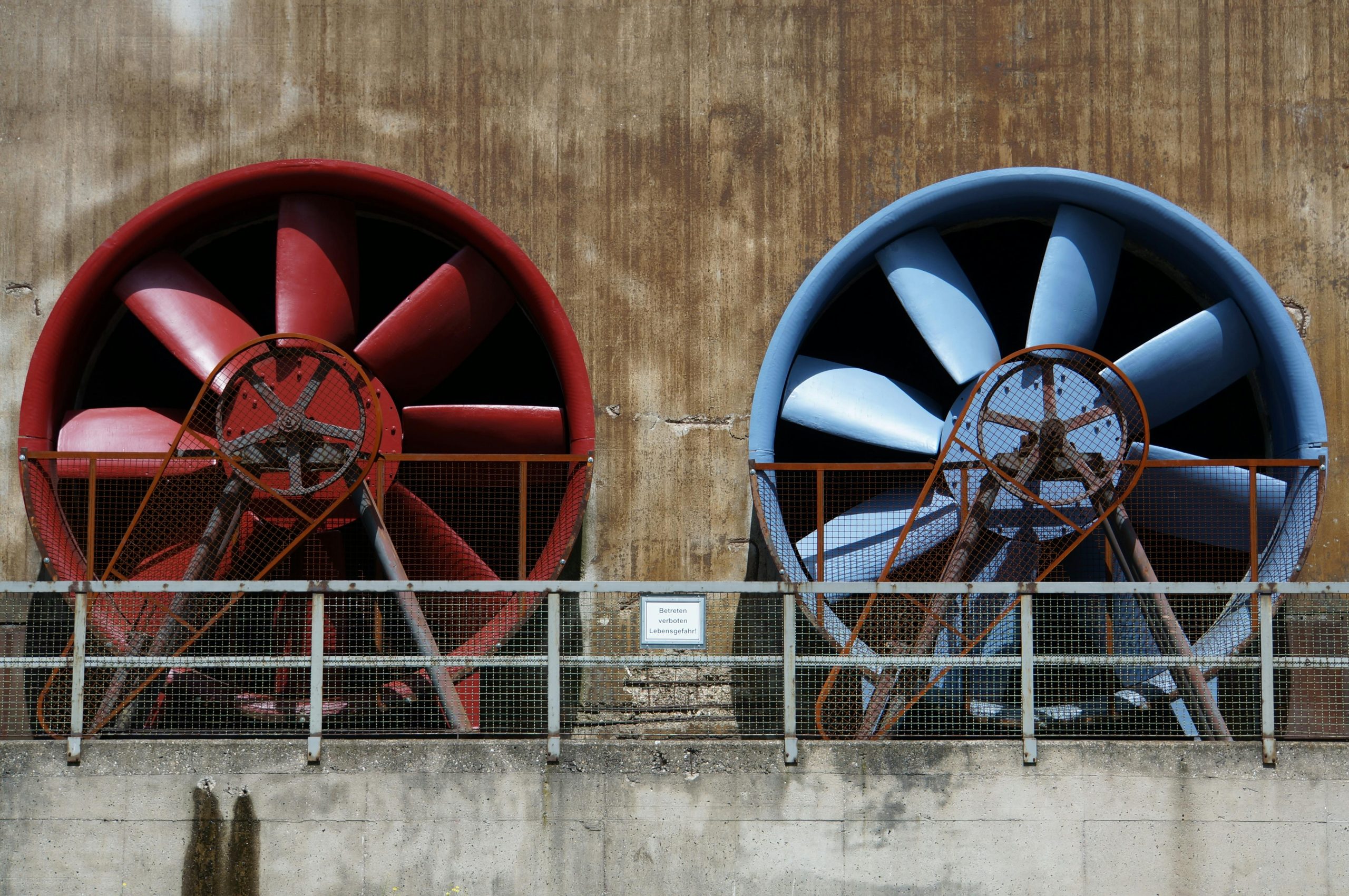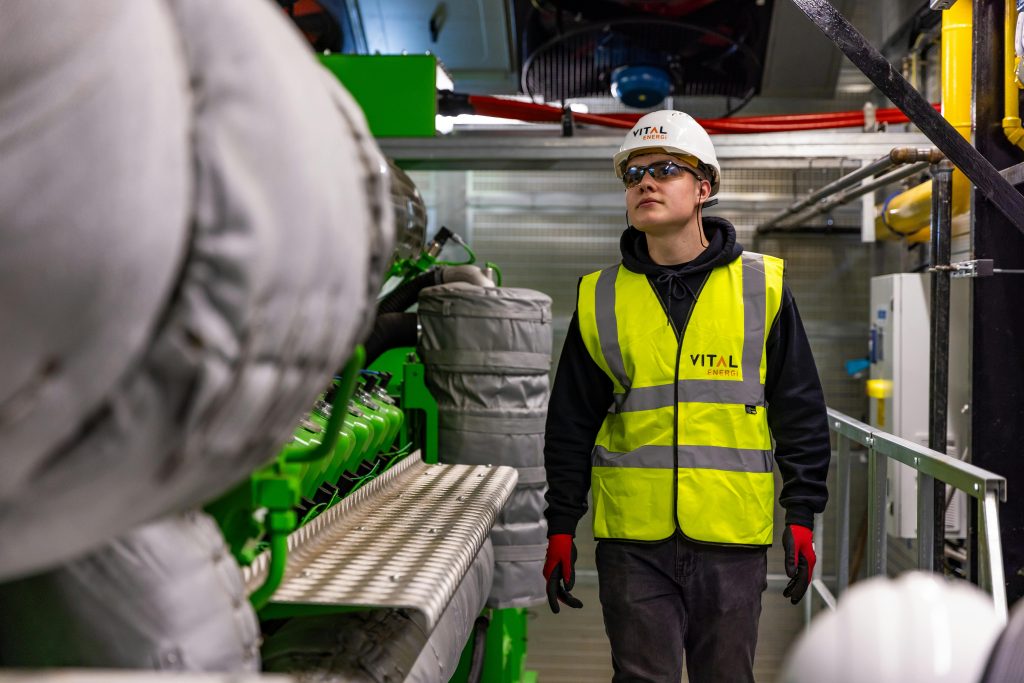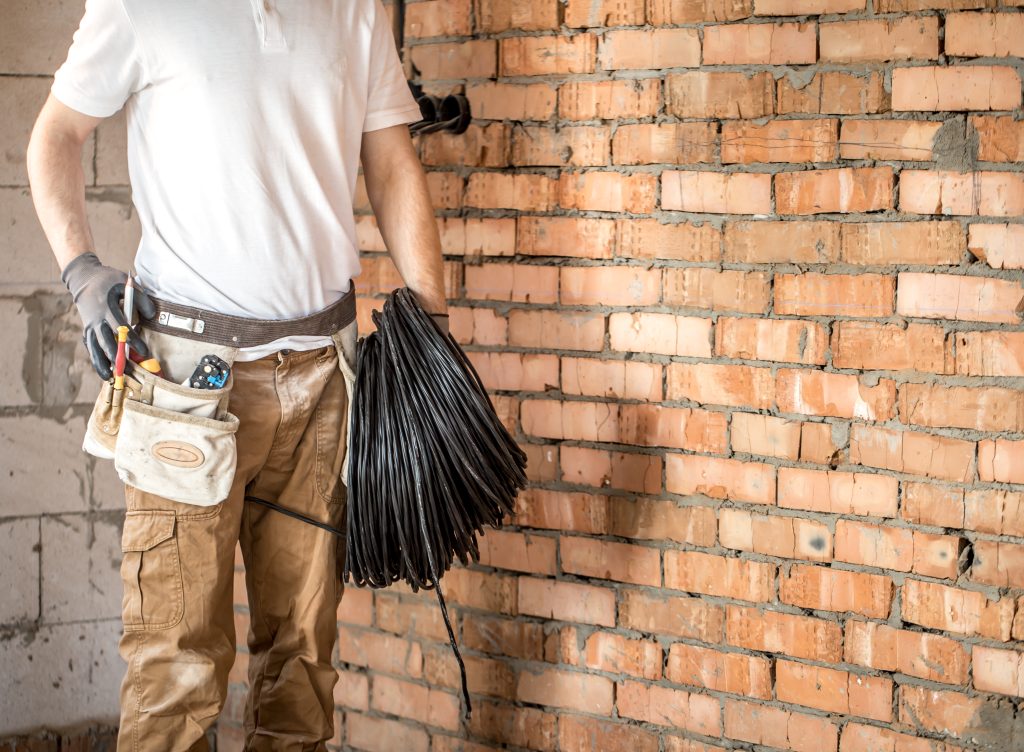Managing a building is a complex undertaking. Every day, facility leaders face a fundamental decision: do we invest in prevention, or do we wait for problems to arise? This choice defines the difference between the maintenance of facilities and repair. They are not the same. One is a proactive strategy. The other is a necessary reaction. Understanding this distinction is the key to ensuring the performance, safety, and efficiency of any building.
A well-planned maintenance of facilities strategy protects your investment. It reduces long-term costs and ensures that operations continue without disruption. On the other hand, an approach based solely on repair can lead to unexpected shutdowns and unforeseen expenses. In this article, we will explore these two philosophies in depth.
We will break down their differences, their implications, and how an integrated strategy, like the one offered by MASE, can transform your building’s performance. Understanding the value of the maintenance of facilities is the first step toward operational excellence.
Defining Key Concepts: What is Facility Maintenance?
The maintenance of facilities is the set of proactive and planned actions taken to care for a building and its systems. Its goal is simple: to keep everything in optimal working condition. This is not about fixing what is broken. It is about preventing it from breaking in the first place. This strategic approach anticipates problems before they happen.
Proactive Strategies: Preventing Problems Before They Start.
Proactivity is the heart of maintenance of facilities. Think of it as preventative healthcare for your building. We conduct regular check-ups. We inspect critical systems. We calibrate equipment and replace components before they fail. This methodology is based on planning and scheduling. Instead of responding to emergencies, we create an environment where emergencies are far less likely. An effective maintenance of facilities program prevents failures that could bring your operations to a halt.
Core Objectives of Facility Maintenance:
Good maintenance of facilities goes beyond simple prevention. It pursues clear objectives that benefit the entire organization.
- Maximizing Operational Uptime: Every minute a critical system is down costs money and productivity. The maintenance of facilities ensures that HVAC, electrical, and control systems operate reliably. This keeps occupants comfortable and operations running smoothly.
- Extending Asset Lifespan (Mechanical, Electrical, BMS, Elevators, etc.): A building’s equipment is a significant capital investment. Proper maintenance extends its useful life. A well-cared-for mechanical system will last years longer than a neglected one. The same is true for electrical systems, building management systems (BMS), and elevators. The maintenance of facilities protects and maximizes the return on that investment.
- Ensuring Safety and Compliance: A safe building is a requirement, not an option. Regular maintenance prevents hazards like electrical fires, security system failures, or air quality issues. It also ensures compliance with local and federal regulations, avoiding fines and penalties. A robust maintenance of facilities program is fundamental to safety.
- Optimizing Energy Efficiency: Systems that are not properly maintained consume more energy. A dirty air filter makes an HVAC system work harder. A poorly calibrated control system wastes heating and cooling. The maintenance of facilities ensures all components operate at peak efficiency. This translates directly into lower utility bills and a smaller carbon footprint.
MASE’s Approach: Comprehensive Maintenance for Diverse Facilities.
At MASE, we understand that every facility is unique. That is why our approach to maintenance of facilities is both comprehensive and customized. We serve a wide range of clients with very specific needs. Our expertise includes:
- Federal Buildings: We meet the rigorous security and operational standards of the government.
- Military Bases: We provide robust and reliable support for critical infrastructure.
- Hospitals: We ensure 100% uptime in environments where lives depend on it.
- Office Buildings: We create comfortable, safe, and productive work environments for tenants.
Our team delivers complete maintenance of facilities, covering every system from janitorial services to the most complex BMS controls.
Understanding Facility Repair: Responding to Failures
Facility repair is the act of fixing a component or system after it has failed. Unlike maintenance, repair is inherently reactive. It happens in response to a problem that has already caused a disruption or malfunction.
Reactive Measures: Addressing Issues After They Occur.
Reactive measures are triggered by a breakdown. A light flickers and goes out. An elevator stops working. The air conditioning fails in the middle of summer. In each case, a technician is called to diagnose and solve the problem. This “run-to-failure” model addresses issues as they arise. While sometimes unavoidable, relying solely on repair is a risky and expensive strategy.
When is Repair Necessary? Identifying Critical Failures.
Every facility will experience failures at some point. Repair becomes necessary when a critical asset stops functioning. This could be a major water leak, an electrical short circuit, or a heating system failure in winter. In these situations, a fast and effective response is crucial to minimize damage and restore operations. Repair is an inevitable part of facility management, but it should not be the primary strategy.
Potential Downsides of a Repair-Only Strategy:
Relying only on repairs can have serious consequences for an organization.
- Increased Downtime and Disruption: Breakdowns are unpredictable. They can happen at the worst possible moment, halting operations, affecting customers, and reducing productivity. Unplanned downtime is one of the biggest hidden costs of a reactive strategy.
- Higher Long-Term Costs: Emergency repairs are usually more expensive. They involve overtime rates for technicians and rush shipping costs for parts. Furthermore, a failure in one component can cause cascading damage to other systems, multiplying the final cost. A proactive approach to maintenance of facilities avoids these spending spikes.
- Potential Safety Hazards: Failing equipment can create a dangerous situation. Faulty wiring can lead to a fire. A broken ventilation system can compromise air quality. Waiting for something to break means accepting a higher level of risk for the building’s occupants.
Facility Maintenance vs. Repair: Key Differences and Strategic Implications
Understanding the key differences between the maintenance of facilities and repair helps in making smarter strategic decisions.
Timing: Proactive Planning vs. Reactive Urgency.
- Maintenance: It is planned and scheduled in advance. It is performed during low-activity periods to minimize disruption.
- Repair: It is unpredictable and urgent. It happens without warning and demands immediate attention, interrupting the normal workflow.
Cost: Controlled Investment vs. Unpredictable Expenses.
- Maintenance: Represents a controlled and budgeted operational cost. It is a predictable investment in asset reliability.
- Repair: Generates unpredictable and often high expenses. Emergency costs and secondary damages can overwhelm any budget.
Asset Lifespan: Preservation vs. Potential Shortening.
- Maintenance: A good program for the maintenance of facilities is designed to preserve and extend the life of equipment.
- Repair: Fixes the immediate problem, but the cycle of stress and failure can shorten the overall lifespan of the asset.
Operational Impact: Smooth Operations vs. Potential Interruptions.
- Maintenance: Aims to ensure smooth and continuous operations. Interventions are planned so they do not interfere.
- Repair: Causes direct interruptions to operations. Downtime affects everyone, from employees to customers.
Risk Management: Mitigating Failures vs. Addressing Emergencies.
- Maintenance: It is a fundamental risk management tool. It reduces the likelihood of catastrophic failures and safety issues.
- Repair: Is crisis management after the risk has already materialized into a real problem.
Types of Facility Maintenance Strategies: Finding the Right Approach with MASE
There is no single approach to the maintenance of facilities. The right strategy combines different types of maintenance to fit the needs of each system and asset. At MASE, we help our clients implement the ideal mix.
Preventive Maintenance (PM): Scheduled Care for Reliability.
Preventive maintenance is the most common form of proactive care. It is based on a calendar. Tasks are performed at regular intervals (weekly, monthly, annually) regardless of the equipment’s condition. Examples include changing HVAC filters every three months, inspecting fire extinguishers annually, or periodically lubricating moving parts. It is a simple and effective way to improve reliability.
Predictive Maintenance (PdM): Using Data to Anticipate Needs.
Predictive maintenance is a more advanced approach. It uses data and technology to predict when a piece of equipment might fail. Tools like vibration analysis, infrared thermography, or oil analysis can detect early signs of wear. This allows maintenance to be scheduled just before a failure occurs, optimizing resources and avoiding unnecessary work.
Reactive Maintenance (Run-to-Failure): When is it Appropriate?
Although generally avoided, a run-to-failure strategy can be appropriate in certain cases. It applies to non-critical, low-cost, and easily replaceable assets. For example, it makes no sense to perform preventive maintenance on a light bulb. It is more cost-effective to simply replace it when it burns out. The key is to apply this strategy only to the right assets.
Specialized Maintenance: Elevators and Landscaping Needs.
Some systems require highly specific expertise. The maintenance of facilities for elevators, for example, is heavily regulated and must be performed by certified technicians. Likewise, landscaping affects not only aesthetics but also safety (falling branches) and irrigation systems. MASE provides experts in these specialized areas as part of a comprehensive program.

Navigating Building Management System (BMS) Controls: MASE’s Unique Integration Services
Building Management Systems (BMS) are the brains of a modern facility. They control HVAC, lighting, and security. However, many buildings operate with outdated control systems.
The Challenge: Obsolete or Poorly Serviced Control Systems in Existing Facilities.
A major challenge in today’s maintenance of facilities is dealing with aging BMS systems. Often, these systems are “proprietary,” meaning only the original manufacturer can service them. Over time, these manufacturers may go out of business or stop supporting the product, leaving building owners stuck with an inefficient system that is expensive to maintain or replace.
MASE’s Solution: Distech Controls Integration Services.
MASE offers an innovative solution to this problem. As certified integrators of Distech Controls, a leading open-systems brand, we can modernize your building’s controls without a full replacement.
Maintaining Existing Controls: Avoiding Full Replacement.
It is not always necessary to rip and replace the entire system. Our team can integrate modern Distech Controls technology with your existing BMS components. We keep the parts that still work and upgrade only what is needed, like the controllers and the user interface.
Upgrading for Modern Efficiency and Functionality.
By installing a new Distech Controls “front end” over your existing infrastructure, we give your building a new lease on life. You get the benefits of a modern system—better control, data analytics, remote access—without the cost and disruption of a complete overhaul.
Significant Cost Reduction vs. Complete System Renewal.
This integration strategy can reduce modernization costs by up to 70% compared to a full system replacement. It is the smartest, most cost-effective way to update your building’s technology.
Benefits of Upgrading Your BMS with MASE:
- Enhanced Energy Efficiency: Modern controls optimize energy consumption with precision.
- Improved Operational Control: Manage your building from an intuitive, accessible interface.
- Extended Lifespan of Existing Infrastructure: Protect your investment in wiring and other components.
- Reduced Capital Expenditure: Avoid a massive capital outlay on a brand-new BMS.
The Importance of Proactive Facility Maintenance: Benefits Beyond Cost Savings
The benefits of a proactive maintenance of facilities program extend far beyond financial savings.
Enhanced Safety and Reduced Risk for Occupants.
Regular maintenance is the first line of defense against accidents. Electrical inspections prevent fires. Care for hallways and floors prevents slips and falls. A well-maintained HVAC system ensures good air quality, protecting the health of everyone who uses the building.
Regulatory Compliance and Avoiding Penalties.
Buildings are subject to countless safety, accessibility, and environmental regulations. A documented maintenance of facilities program demonstrates due diligence and ensures your building meets all applicable codes. This helps you pass inspections and avoid costly fines.
Protecting Your Facility’s Value and Reputation.
A well-cared-for building projects an image of professionalism and quality. It attracts and retains better tenants or customers. It maintains its value as a real estate asset. A reputation for reliability and safety is priceless, and it is built on a foundation of consistent maintenance of facilities.
Making Informed Decisions: When to Prioritize Maintenance, Opt for Repair, or Consider an Upgrade
Effective facility management requires making informed decisions constantly.
Assessing Criticality: Which Systems Demand Proactive Maintenance?
Not all systems are created equal. It is vital to identify which assets are critical to your operations. The HVAC system in a hospital is mission-critical. The cooling system in a data center is, too. These systems demand the highest level of proactive maintenance of facilities. Others that are less critical can be managed with a different approach.
Cost-Benefit Analysis: Repairing vs. Replacing vs. Upgrading (Especially for Controls).
When a system fails, you must analyze your options. Is a cheap repair the best solution? Or is the system so old that a replacement is more cost-effective in the long run? For BMS controls, the upgrade option offered by MASE presents a very attractive third path. A cost-benefit analysis will help you make the right choice.
Long-Term Strategic Planning for Facility Longevity.
The best facility management does not focus on the next month, but on the next ten years. A long-term strategic plan, which includes a budget for the maintenance of facilities and future capital upgrades, is essential for ensuring the longevity and value of your building.
Consulting with MASE: Expert Guidance for Your Facility’s Needs. (CTA)
Navigating these decisions can be overwhelming. The team at MASE is here to help. We offer expert guidance to assess your needs, analyze your systems, and develop a strategic maintenance of facilities plan that aligns with your goals and budget. Consult with our experts for a personalized assessment of your facility’s needs.
Partnering with MASE for Comprehensive Facility Maintenance and Modernization
Choosing the right partner for the maintenance of facilities is one of the most important decisions you will make.
Our Expertise Across Key Facility Systems: Janitorial, Mechanical, Electrical, BMS, Elevators, Landscaping.
MASE offers a truly integrated solution. Our expertise covers every system that makes your building run. From daily cleaning to complex mechanical maintenance, electrical system management, BMS modernization, elevator service, and landscaping. We are your single point of contact for all your facility needs.
Tailored Maintenance Programs for Your Specific Facility Type.
We understand that a hospital is not the same as a military base or an office building. We design custom maintenance of facilities programs that address the unique challenges and requirements of your industry and your specific building.
A Commitment to Reducing Your Operational Costs and Improving Efficiency.
Our ultimate goal is simple: we want your building to run better and cost less to operate. Through proactive maintenance of facilities, energy optimization, and smart control system upgrades, we are committed to lowering your operational costs and improving overall efficiency.
Request a Consultation to Discuss Your Facility’s Maintenance and Controls Strategy. (CTA)
Are you ready to take your building’s performance to the next level? Stop reacting to problems and start preventing them. Request a consultation today to discuss how MASE’s maintenance and controls modernization strategy can benefit your organization.
Frequently Asked Questions (FAQ) about Facility Maintenance and Repair
How often should different facility systems (e.g., HVAC, electrical) be maintained?
The frequency depends on the system, its usage, and the manufacturer’s recommendations. Generally, HVAC systems require quarterly or semi-annual check-ups. Electrical systems should be inspected annually by a professional. MASE creates a custom maintenance schedule for every asset in your facility.
What are the first signs that a building’s control system might need an upgrade?
Common signs include unusually high energy bills, frequent occupant complaints about temperature, the need to manually override controls often, and an inability to get useful performance data from the system. If your current service provider has trouble finding replacement parts, it is a clear signal.
Can MASE integrate new controls with my existing, older BMS components?
Yes, absolutely. This is one of our specialties. Using the open platform of Distech Controls, we can install new controllers and software that communicate with your existing field devices (sensors, valves, etc.), as long as they are in good working order. This avoids a costly and disruptive full replacement.
What’s the typical ROI for investing in proactive facility maintenance?
The return on investment (ROI) from proactive maintenance of facilities is significant. It comes from multiple sources: energy savings (5-20%), reduced emergency repair costs (which can be 3-5 times more expensive), extended asset life (avoiding premature capital replacements), and eliminating the cost of unplanned downtime.
How does MASE handle emergency repair situations for its maintenance clients?
For our clients on a maintenance contract, emergencies are our top priority. We have rapid-response protocols and technicians on standby to address critical failures. Being a MASE maintenance client ensures you get priority access to our repair services, ensuring your issues are resolved as quickly as possible.





